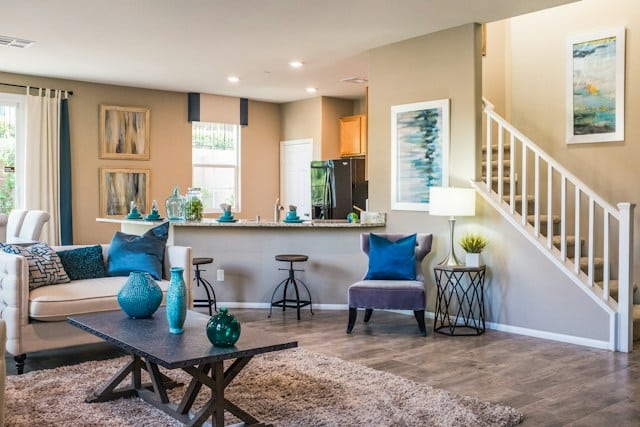In our ever-evolving world, the need for flexibility and adaptability in our living spaces can’t be understated. Innovative home design solutions are emerging to cater to the shifting needs of homeowners. One of these solutions is the concept of hidden office spaces, particularly in built-in living room cabinets. This concept is a game-changer, especially for those of you with a small room or those who desire a clutter-free and aesthetically pleasing environment. So, how exactly do you design an office within your living room cabinet? Read on to explore practical insights and tips to guide you through this project.
1. Understand Your Space
Before diving into the design process, it’s essential to have a comprehensive understanding of your space. This involves studying the layout of your living room and identifying the ideal spot for your built-in cabinet.
Also to read : How to Choose the Right Type of Lighting for a Craft Room with No Windows?
Your chosen location should be both functional and aesthetically pleasing. It could be a wall that currently serves no purpose or an area next to a window to take advantage of natural light. You should also consider proximity to power outlets for your office equipment.
Next, measure the available space carefully to determine how large your built-in cabinet can be. This includes noting the height, width, and depth of the area. Such details are vital as they influence your choice of desk, storage facilities, and even the design of the doors.
Also to discover : What Are the Most Durable Flooring Options for a Home with Large Dogs?
2. Designing the Desk and Storage
A crucial element in your hidden office is the desk. This is the primary workspace, and its design will profoundly impact your comfort and productivity. Ideally, the desk should be of a height that allows you to work comfortably for extended periods. Depending on the available space, it can be a pull-out or fold-down desk. You can even incorporate a sliding mechanism to make it easily adjustable.
Storage is another significant consideration. Adequate storage facilities help maintain an organized workspace and avoid clutter. Your cabinet can include shelves for books and file storage, drawers for stationery, and compartments for cables and other equipment. Make sure to personalize your storage to suit your specific needs. If you frequently use houzz or other large documents, for instance, then larger shelves will work best.
3. Choosing the Right Doors
The doors of your built-in cabinet are not merely functional. They also play a crucial role in the overall aesthetic of your living room. When open, they should blend seamlessly with the rest of the room and not obstruct movement. When closed, they should make the cabinet look like an ordinary piece of furniture.
There are several door design options at your disposal. Sliding doors are a popular choice due to their space-saving quality. Alternatively, you may opt for hinged doors, which are easy to install and use. For a touch of sophistication, consider hidden doors that become virtually invisible when closed.
4. Incorporating a Creative Design
Creativity can make a world of difference in your hidden office design. For instance, your cabinet can have an elegant finish that complements the overall living room decor. You can also incorporate decorative elements like moldings and unique hardware.
If your living space is small, consider using mirrors on your cabinet doors. They will reflect light and add depth to your room, creating an illusion of more space. You can also explore different lighting options. Task lighting, such as a desk lamp, is crucial for your workspace. However, you can also add ambient lighting inside the cabinet for a cozy feel when the office is not in use.
5. Seeking Professional Assistance
Though designing a hidden office may seem straightforward, it does involve some complexities. Engaging the services of a professional can help ensure that the end product is both functional and visually appealing. They bring expertise in space planning, ergonomics, and lighting, among others.
Professionals will also advise on the appropriate materials for your built-in cabinet. Durable materials will ensure that your cabinet stands the test of time. Additionally, they can help balance your aesthetic desires with your budget constraints.
Designing a hidden office in your living room cabinet can be an exciting project. It allows you to maximize your space while maintaining a clean, organized living area. As you embark on this venture, remember to keep your specific needs at the forefront. After all, this office is for you – it should serve you in the best way possible.
6. Utilizing your Hidden Office Space Efficiently
Equally important to the design of your hidden office is its usage. This revolves around how you organize your workspace to suit your needs. For instance, you can use desk organizers to keep your stationery, files, and other office essentials within reach. This is a way of maximizing your desk area, especially if it’s not particularly spacious.
If you are an artistic individual, you may opt to have a murphy bed incorporated into your design. This can serve as a source of inspiration during work breaks. Alternatively, if you are a writer, you may wish to have a coffee table where you can sit and brainstorm ideas.
When it comes to your chair, choose one that is both comfortable and supportive. It should be adjustable to suit your height and posture. Remember, a good chair can make a significant difference in your productivity and overall health.
Lastly, keep your workspace clean and organized. Clutter can be distracting and detrimental to your productivity. Create a cleaning routine that works for you and stick to it. This will make your work environment conducive and enjoyable.
7. Multipurpose Functionality for Small Spaces
Having a hidden office in your living room cabinet presents an opportunity for multipurpose functionality. This is particularly beneficial if your living space is small. For instance, if your living room doubles up as a dining room, your hidden office can be designed in such a way that it can serve a dual purpose.
You can have a built desk that can also serve as a dining table. This can be achieved by incorporating a design that allows the desk to be extended or adjusted in size. You can also have hidden storage compartments within the desk that can store both office and dining supplies.
If your living room also serves as a kitchen dining area, you can have your built cabinets designed to accommodate both your office and kitchen storage needs. This will help you maintain a neat and organized living space, despite having limited space.
8. Conclusion
Through careful planning and creative design, you can transform your ordinary living room cabinet into a functional and modern office space. Remember, your hidden office should be a reflection of you – it should cater to your specific needs and tastes.
From the choice of desk to the design of doors, every detail counts. Don’t shy away from exploring bold and unique desk ideas. Should the process seem daunting, professional assistance is always available to guide you.
Whether you are working from home or simply need a quiet space to manage your affairs, a hidden office in your living room cabinet is a practical and aesthetically pleasing solution. It presents an opportunity to maximize your space, maintain a clutter-free environment, and incorporate a unique feature into your home. With the right design, your hidden office nook can become your favorite spot in the house. Happy designing!






